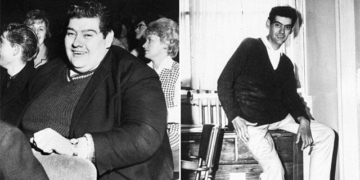Billionaire Bill Gates is renowned for his reading habits. In a media interview, he revealed that he can read up to 50 books a year. During vacations, the Microsoft co-founder often dedicates 3 hours a day to reading.
“Read a lot and seek a skill that you think can make a positive impact on the world,” he stated.
Notably, when Bill Gates wants to understand something thoroughly and remember it well, he tends to read extensively, not only about the current topic but also related subjects.
For example, when he seeks to learn about science, this billionaire often reads about the history of science and individual scientists, including their struggles and insights.

Bill Gates often reads extensively, not just about the current topic but also related subjects.
“If you read those additional books, you will gain a better understanding of the timeline, maps, and various fields of science. Moreover, having a broad perspective allows you to contextualize everything. If you read enough, you will find similarities among things, making it easier for you because this resembles that.”
On the other hand, he believes that learning something entirely new, where there are no frameworks or patterns in your mind, is significantly more challenging.
Research on the brain shows that the Microsoft co-founder is entirely correct. Seeking out and building information around the topic you wish to understand in alignment with your initial goals can enhance your ability to absorb information, thereby facilitating easier learning and acquiring new knowledge.
Recently, a research study published in Inc. magazine involved scientists from the University of Pennsylvania who work in physics, neuroscience, and biomedical engineering collaborating to conduct an intriguing experiment on 360 volunteers.
In this experiment, subjects were shown rows of gray squares, one or two of which would turn red. When this occurred, participants were asked to immediately press the corresponding keys on their keyboard.
Scientists tracked the time it took from the moment the squares turned red until the subject pressed a key.

The brain is wired to recognize patterns.
What the participants did not know was that the keys turning red did not follow a random order.
All these keys only operated under one of two patterns: the “modular” pattern, based on 3 interconnected five-pointed stars, or the “grid” pattern, based on 5 interconnected triangles.
The researchers hypothesized that subjects would be able to press the keys faster if their brains recognized the pattern, allowing them to predict which square would turn red next.
Indeed, when looking at squares arranged in the more recognizable modular pattern, participants could predict which square would turn red and press the corresponding keys much faster, although they also made errors.
Analyzing their responses, the researchers concluded that instinctively, we seek patterns and similarities in the data we absorb.
As Gates said, we look for things that resemble other things. Our brains are connected to find patterns wherever possible and prioritize seeing those overarching patterns rather than accurately understanding every detail.
This is beneficial for faster learning and quicker pattern recognition—a skill that can be lifesaving if the pattern indicates an impending danger. Equally important, researchers noted that it allows us to conserve mental energy, one of our most valuable resources.

We seek patterns and similarities in the data we absorb.
Thus, this is a significant reason why Gates’ method of reading and studying in patterns is so effective. If you want to learn about a subject, expand your network when deciding what to read or learn.
This allows your brain to function at its best, helping you recognize patterns and frameworks by looking at the bigger picture and not worrying too much if you make a few mistakes along the way.
One interesting finding is that researchers also discovered that some people who are better at recognizing overarching patterns may be less accurate, while those who excel at noticing details may struggle more with perceiving general patterns.
Keep these differences in mind when applying them in life, such as hiring or assigning people to a project. A team that combines both skill sets can become stronger and work better together.


















































